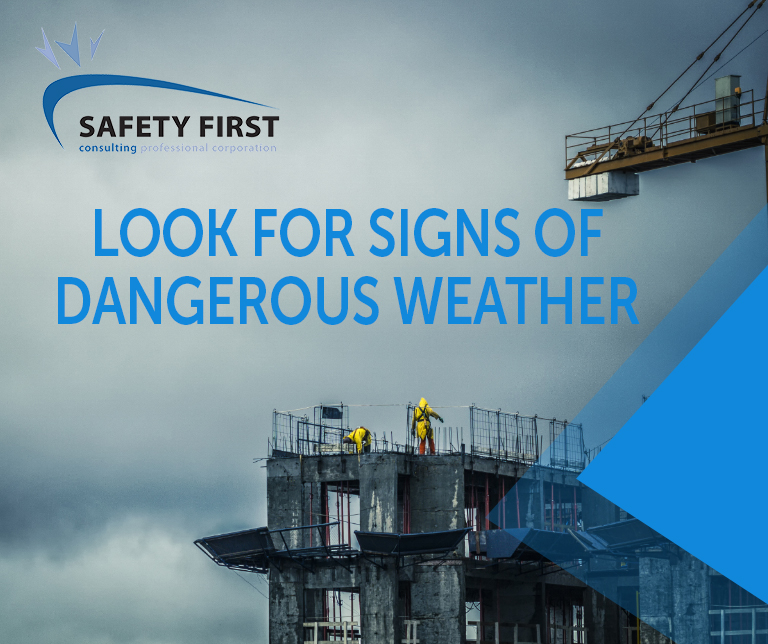
Keeping Safe in Dangerous Weather Conditions
There are several causes of injury in the workplace besides working with hazardous chemicals or working from heights. Too often, many workers become injured or get into accidents due to unsafe weather conditions. Unfortunately, many of these accidents are hard to prevent, however with the proper maintenance and protection of tools and equipment, keeping workers safe during severe weather conditions can be safeguarded.
What Classifies Unsafe Working Conditions?
When on a jobsite, it’s important to look for signs of dangerous weather approaching such as heat waves or intense storms. It is often difficult to predict how severe the weather conditions may be. In most cases, unsafe weather conditions include:
- Impending storms
- Extreme heat or cold temperatures
- Tornado’s
- Lighting strikes

How to Work Safely in These Conditions
To ensure all workers are working safely, especially in dangerous weather conditions, workers shall educate themselves on weather-related incidents, personal protective equipment, and how to prepare themselves overall while on-site.
Educating Yourself on Dangerous Weather Conditions
It is important to know what weather conditions you may face while on-site, but specifically, how dangerous and threatening they can be to your physical health. Workers should be aware of how certain weather conditions, such as extreme heat, can be a detriment to their well-being. Symptoms may include, but are not limited to, fatigue, light-headedness, and nausea, all of which can impede a worker’s health and productivity in the workplace.
By educating themselves about the dangers associated with their jobs and the effect weather may have on them, can provide workers with the opportunity to work appropriately and safely. Knowing when to stop working or cease services for the workday can help workers know how to avoid potential injury or illness in the workplace.
Personal Protective Equipment
Workers shall also always be equipped with the proper personal protective equipment when working outdoors on-site. For example, in extreme heat, workers must still maintain proper work attire, but may wear breathable materials, such as cotton or rayon. On the other hand, when working in dust storms, workers shall wear safety glasses to protect their eyes or masks to prevent themselves from inhaling any hazardous particles or dust. In the event there is a heavy torrential downpour, workers shall have an extra set of dry clothes, perhaps water and windproof. There are several challenges when working outdoors daily, but these can be mitigated in terms of how they affect a worker’s physical health onsite.
Preparing for Dangerous Weather Conditions
Though much of the weather cannot be anticipated, it is important that workers take the necessary precautions in ensuring their safety by preparing themselves for all weather conditions. Taking the necessary steps to protect yourself from extreme weather, such as heat or dust storms, is important in improving safe work practices.
View our online training course by visiting our safety training website. Click here

